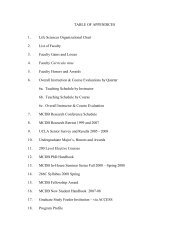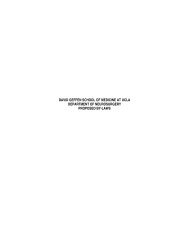Departmental Self Review - UCLA Academic Senate
Departmental Self Review - UCLA Academic Senate
Departmental Self Review - UCLA Academic Senate
- No tags were found...
You also want an ePaper? Increase the reach of your titles
YUMPU automatically turns print PDFs into web optimized ePapers that Google loves.
coordinated each year by the responsible faculty in terms of content and sequencing. Additionally, thepharmacology course has been increased from 4 to 5 units, a change that was endorsed by the BRN intheir most recent review.2. Strengths and Weaknesses of the Program. Since the last review, all APN syllabi arereviewed by the Master’s Program Committee biannually in order to track curricular changes and reduceredundancy. The program’s research focus was a previous strength that has been further enhanced sincethe last review. The core research course (N204 Research Design and Critique) has been redesigned tofacilitate effective discussion sessions and understanding of evidence-based practice procedures and thisyear, the comprehensive exam was completely revised into a structured literature review that betterreflects the School’s strengths in clinical application of nursing and translational research.The School’s faculty has approximately doubled since the last review, and the expertise of these newfaculty has created new areas of strength that include gerontology, pediatrics and maternal health,community health nursing, and lab-based biologic research. The School’s previous strength in culturaldiversity and training in cultural competence has been improved by the revision of NC209, HumanDiversity in Health and Illness and the addition of a new subspecialty preparing students for the care ofunderserved populations. This subspecialty has been funded by a HRSA grant intended to teach advancedpractice nursing students’ culturally competent techniques of assessment and care administration forindividuals from traditional under-served and/or vulnerable populations. The School has also beensuccessful in implementation of a strategic plan to increase the diversity of faculty, with faculty addedfrom underrepresented minorities including African American, American Indiana and Asians; nowrepresenting 29% of the career ladder faculty.3. Student Enrollment and Recruitment. Over the last eight years, the number of MSNstudents has averaged 236 per year. Previous reviews have raised concerns about lowering standards ofadmission in order to attain enrollment levels. Since the last review, the admissions committee hasrevised the admission review sheet and carefully evaluated admission standards and procedures to ensurequalification of all entering students. The Master’s Program Committee has instituted procedure foridentification of students with writing problems early in the program, and has strengthened key admissionrequirements so that key physical assessment prerequisites are more recent.Since the last review, the applicant-admit ratio has been 207 to 155, with most competitive specialties,family and acute care, being the largest in terms of student body. Some specialties have experiencedintermittent application drops, and in those years, enrollment targets have been adjusted based upon theadmission guidelines so that only fully qualified applicants are admitted. Given the challenges ofcompeting programs in the area and the difficulty of nurses to return to school, the implementation of afull-time recruiter and our summer research internship program have been critical to maintaining a stableapplicant pool. The School has also successfully restructured the time-consuming responsibility forestablishing new clinical sites and maintaining current sites for the different specialties by assigning keyresponsibilities to a staff member and by giving release time to involved faculty.The Master’s Program Committee has been considering curriculum revisions to improve the tailoringof core courses for individual specialties; these revisions have been tabled as the School evaluates andimplements the MECN program; however, sequencing changes have been implemented to improve theflow of the existing curriculum. Given the continued high level of student interest, the Neuropsychiatriccourse sequence has been revised and a clinical component added with the long-term goal of offering aformal Neuropsychiatric Nurse Practitioner specialty program. Another goal for the APN program is toenhance interaction with training programs in the School of Medicine (SOM). A shared simulation labhas been already been established; this Simlab facility is currently staffed by and located in the SON, but17



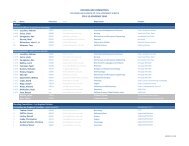
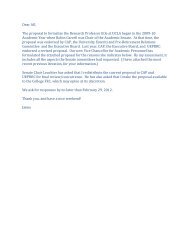
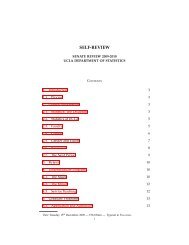


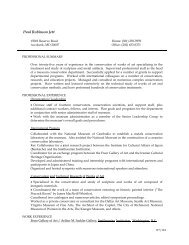


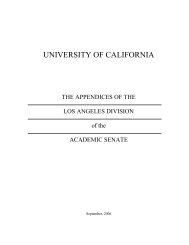
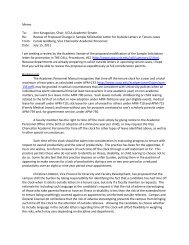
![Schedule[Final] Summer Sessions - UCLA Academic Senate](https://img.yumpu.com/42025221/1/190x245/schedulefinal-summer-sessions-ucla-academic-senate.jpg?quality=85)
